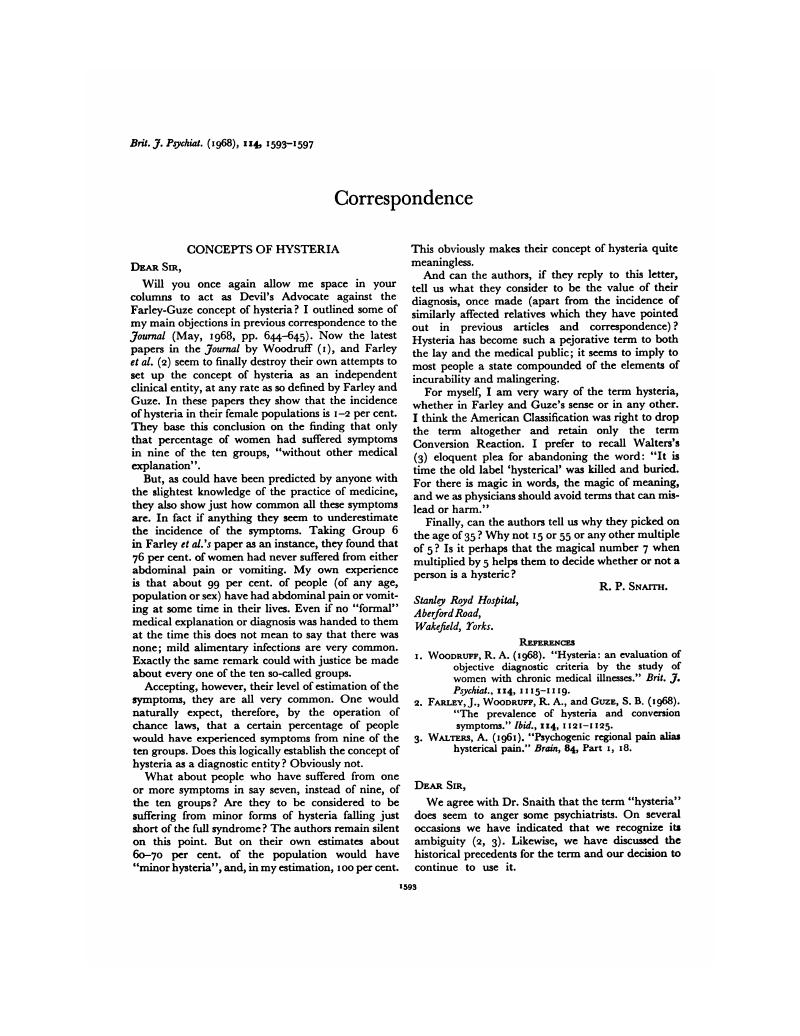No CrossRef data available.
Article contents
[No Title]
Published online by Cambridge University Press: 29 January 2018
Abstract
An abstract is not available for this content so a preview has been provided. As you have access to this content, a full PDF is available via the ‘Save PDF’ action button.

- Type
- Correspondence
- Information
- Copyright
- Copyright © Royal College of Psychiatrists, 1968
References
1.
Gatfield, P. D., and Guze, S. B. (1962). “Prognosis in differential diagnosis of conversion reactions (a follow-up study).”
Dis. new. Syst., 23, 623–631.Google Scholar
3.
Guze, S. B. (1967). “The diagnosis of hysteria: what are we trying to do?”
Amer. J. Psychiat., 124, 77–84.Google Scholar
4.
Perley, M. J., and Guze, S. B. (1962). “Hysteria—the stability and usefulness of clinical criteria. A quantitative study based on a follow-up period of six to eight years in 39 patients.”
New Eng. J. Med., 266, 421–426.Google Scholar
5.
Purtell, J. J., Robins, E., and Cohen, M. E. (1951). “Observations on clinical aspects of hysteria. A quantitative study of 50 hysteria patients and 156 control subjects.”
J.A.M.A., 146, 902–909.Google Scholar



eLetters
No eLetters have been published for this article.